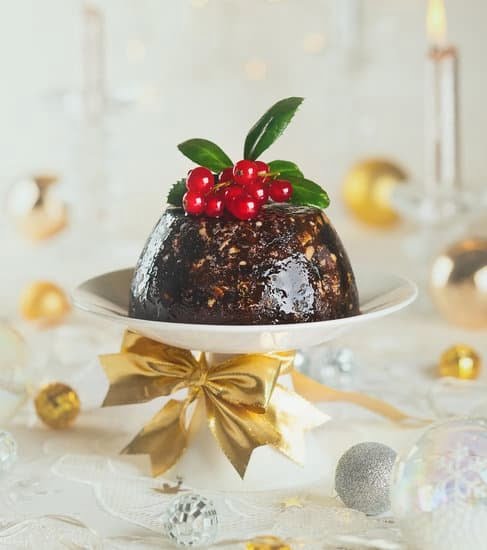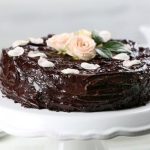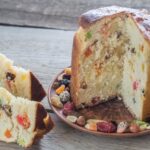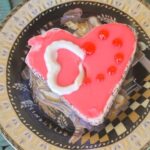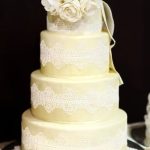Are you looking to learn how to make buttercream for decorating cakes? Buttercream is a versatile and delicious frosting that can be used to decorate and enhance the flavor of your cakes. In this article, we will take you through the process of making buttercream from scratch, discussing the different types of buttercream, essential ingredients, step-by-step instructions, expert tips and tricks, flavor variations, decorating techniques, as well as storage and usage recommendations.
Buttercream is an essential component in cake decorating, as it not only adds sweetness but also acts as a smooth and creamy canvas for creative designs. Whether you’re a beginner or an experienced baker, mastering the art of making buttercream is key to achieving professional-looking cakes.
We will begin by explaining what buttercream is and its role in cake decorating. We’ll then delve into the different types of buttercream such as American, Italian, Swiss, and French. Following that, we will provide a detailed list of ingredients needed to make buttercream, including butter, powdered sugar, and flavorings. Then we will offer a thorough guide on how to make buttercream from scratch with step-by-step instructions on mixing, adding color, and achieving the right consistency.
Types of Buttercream
Buttercream is a versatile and essential component in cake decorating, providing a smooth and creamy texture that can be easily manipulated for various designs. There are several types of buttercream, each with its own unique flavor and consistency, allowing decorators to choose the best option for their specific needs.
American buttercream is the most straightforward type, made with butter, powdered sugar, and vanilla extract. It has a sweet taste and a sturdy consistency, making it ideal for piping decorations and frosting cakes. On the other hand, Italian buttercream is created by adding hot sugar syrup to whipped egg whites, resulting in a silky smooth texture that is perfect for intricate decorations.
Swiss buttercream involves heating egg whites and sugar over a bain-marie before whipping them into a meringue-like consistency and incorporating softened butter. This type of buttercream has a light and airy texture, making it perfect for delicate cake decorations. Lastly, French buttercream is similar to Swiss buttercream but uses whole eggs instead of just egg whites, resulting in a richer flavor that pairs well with chocolate or other intense flavors.
Understanding the differences between these types of buttercream allows decorators to choose the best option based on their specific needs when it comes to cake decorating. Whether they need something sweeter and sturdier or lighter and more delicate, there is a type of buttercream that will fit the bill for any project. Learning how to make buttercream for decorating cakes means having this versatility at your fingertips.
Ingredients for Buttercream
When it comes to decorating cakes with buttercream, having the right ingredients is crucial for achieving the perfect texture and flavor. There are several key ingredients needed to make buttercream, including butter, powdered sugar, and flavorings. Each component plays a significant role in creating a smooth, creamy, and delicious frosting that is ideal for cake decorating.
Butter
One of the main ingredients in buttercream is, of course, butter. It’s important to use unsalted butter as it allows you to control the amount of salt in your recipe. The butter should be at room temperature before using it to make sure it blends well with the other ingredients. Using high-quality butter will result in a richer and more flavorful buttercream.
Powdered Sugar
Also known as confectioner’s sugar or icing sugar, powdered sugar is essential for giving buttercream its sweetness and smooth texture. When selecting powdered sugar for your buttercream recipe, be sure to sift it first to remove any lumps and create a silky-smooth frosting.
Flavorings
In addition to the basic ingredients of butter and powdered sugar, flavorings can be added to customize the taste of your buttercream. Common flavorings include vanilla extract, almond extract, or other flavored extracts depending on your preference. It’s important to use high-quality flavorings for the best results as they can significantly enhance the overall taste of your buttercream.
By understanding how each ingredient contributes to the final product of your buttercream frosting, you can ensure that you have everything you need to make a delicious and visually stunning cake creation using this versatile frosting.
Step-by-Step Instructions
To make buttercream for decorating cakes, you will need to follow a simple step-by-step process. Here’s a thorough guide on how to make buttercream from scratch, achieving the perfect consistency and adding color:
1. Cream the Butter: Begin by beating room temperature unsalted butter with an electric mixer on medium speed until it becomes light and fluffy. This usually takes about 3-5 minutes.
2. Add Powdered Sugar: Gradually add sifted powdered sugar to the creamed butter, mixing on low speed until fully combined. This will create the base of your buttercream.
3. Incorporate Flavorings: Add in vanilla extract or any other flavorings you desire. Continue mixing until well incorporated.
4. Achieve Desired Consistency: To achieve a smooth and spreadable consistency, gradually add heavy cream or milk while continuing to mix on low speed. Be mindful not to add too much liquid as it can make the buttercream too runny.
5. Add Color: If you wish to add color to your buttercream for decorating purposes, use gel food coloring as it provides vibrant colors without changing the consistency of the frosting.
6. Adjusting Texture: If your buttercream is too stiff, add a little more cream or milk while continuing to mix until reaching your desired texture.
By following these step-by-step instructions, you will be able to make delicious and creamy buttercream for decorating cakes that will hold its shape for beautiful designs.
Overall, making buttercream for cake decorating is a versatile skill that can be developed over time with practice and experimentation with different techniques and flavor variations. By exploring these various aspects of making and using buttercream, individuals can elevate their cake decorating skills and create stunning and delectable works of edible art.
As with any culinary endeavor, patience is key when learning how to make perfect buttercream for cake decorating purposes. However, armed with the right knowledge, tools, and ingredients, anyone can master this essential skill in the world of baking and pastry arts.
Tips and Tricks
Buttercream is a versatile and delicious frosting that is perfect for decorating cakes. However, it can sometimes be tricky to work with, leading to common problems such as grainy texture, air bubbles, or curdling. In this section, we will discuss some expert tips and tricks for troubleshooting these issues and achieving the best results when making buttercream for decorating cakes.
One common problem when making buttercream is ending up with a grainy texture. This can happen if the powdered sugar is not fully dissolved in the butter.
To avoid this issue, make sure to sift the powdered sugar before adding it to the butter and mix it thoroughly until smooth. If you still end up with grainy buttercream, try beating it for a few more minutes or adding a small amount of warm milk while mixing to help smooth out the texture.
Another common problem is air bubbles in the buttercream, which can result in an uneven surface when decorating a cake. To prevent this issue, use a paddle attachment on your mixer instead of a whisk attachment when beating the butter and sugar. Additionally, you can gently tap the bowl of buttercream on the counter after mixing to release any trapped air bubbles.
Curled or separated buttercream can also be frustrating when trying to decorate cakes. This usually happens if the temperature of the ingredients is not properly balanced or if they are overmixed. To fix curdled buttercream, try heating the mixture slightly and then remixing until smooth. If your buttercream is still too soft or runny, try refrigerating it for 10-15 minutes before using it for decorating.
By following these expert tips and tricks, you can troubleshoot common buttercream problems and achieve smooth, creamy frosting for all your cake decorating projects.
| Common Buttercream Problems | Expert Tips to Solve Them |
|---|---|
| Grainy Texture | Sift powdered sugar before adding it to butter; Mix thoroughly until smooth; Beat for additional time; Add warm milk while mixing |
| Air Bubbles | Use a paddle attachment on mixer instead of whisk; Tap bowl of buttercream on counter after mixing to release air bubbles |
| Curdled Buttercream | Heat slightly and remix until smooth; Refrigerate for 10-15 minutes before using |
Flavor Variations
When it comes to decorating cakes with buttercream, the flavor options are endless. While classic vanilla buttercream is always a hit, experimenting with different flavors can take your cake decorating to the next level. Whether you want to add a hint of citrus with lemon buttercream, indulge in rich chocolate buttercream, or enjoy the fruity sweetness of raspberry buttercream, there are plenty of delicious variations to choose from.
To make chocolate buttercream for decorating cakes, simply start with your basic buttercream recipe and add cocoa powder or melted chocolate. Adjust the amount based on your desired level of chocolate flavor and sweetness. You can also experiment with different types of chocolate, such as dark or white chocolate, to achieve the perfect taste for your cake.
For those who enjoy a refreshing and tangy twist, lemon buttercream is an excellent choice. By adding lemon zest and a small amount of freshly squeezed lemon juice to your buttercream base, you can create a bright and zesty frosting that pairs perfectly with various cake flavors.
Lastly, raspberry buttercream offers a fruity and vibrant option for decorating cakes. To make this variation, simply incorporate seedless raspberry puree or a high-quality raspberry extract into your basic buttercream recipe. This will give your frosting a beautiful pink color and a delightful sweetness that complements both vanilla and chocolate cakes.
| Flavor | Ingredients for Buttercream |
|---|---|
| Chocolate | Cocoa powder or melted chocolate |
| Lemon | Lemon zest and freshly squeezed lemon juice |
| Raspberry | Seedless raspberry puree or raspberry extract |
Decorating Techniques
Piping Techniques
One of the most common ways to use buttercream for cake decorating is through piping. Piping involves using a piping bag and various tips to create different designs and textures on the cake. Popular designs include rosettes, swirls, stars, and shells. To achieve these designs, it’s important to have the right consistency of buttercream. If it’s too stiff, the designs won’t come out smoothly, and if it’s too soft, they won’t hold their shape.
Creating Borders
Adding borders to cakes can elevate their appearance and give them a polished finish. Buttercream can be used to create borders along the edges of the cake or around individual tiers. Simple borders like dots or beads can add a touch of elegance, while more intricate designs like lace or braided borders can take the cake to the next level. Working with a steady hand and practicing different techniques will help in mastering border creation with buttercream.
Constructing Buttercream Flowers
Buttercream flowers are a stunning way to decorate cakes and are sure to impress guests. Common flower designs made with buttercream include roses, daisies, sunflowers, and peonies. These flowers can be piped directly onto the cake or created separately and then placed on top as decorations. Achieving realistic-looking buttercream flowers takes practice and patience, but with time and dedication, anyone can master this delicate art form.
With these decorating techniques using buttercream, bakers can take their cakes to new heights, creating visually stunning treats that taste just as good as they look. Whether it’s simple piping techniques or intricate floral designs, mastering buttercream for cake decorating opens up endless possibilities for creativity in the kitchen.
Storage and Usage
In conclusion, learning how to make buttercream for decorating cakes opens up a world of creative possibilities in the realm of baking. With the knowledge of different types of buttercream, ingredients, step-by-step instructions, and tips and tricks, anyone can take their cake decorating skills to the next level. Whether it’s mastering various flavors or perfecting decorating techniques such as piping and borders, the versatility of buttercream allows for endless opportunities to create stunning edible works of art.
One important aspect to consider when working with buttercream is how to store leftover frosting for future use. By following proper storage techniques, such as refrigeration or freezing in airtight containers, you can ensure that your buttercream remains fresh and ready for your next cake decorating project. Additionally, understanding how to utilize leftover buttercream in new ways, such as repurposing it for cupcakes or cookies, can help minimize waste and maximize creativity in the kitchen.
Ultimately, mastering the art of making and using buttercream for cake decorating comes down to practice and experimentation. Whether you’re a novice baker or an experienced pastry chef, there’s always something new to discover when it comes to creating delectable desserts with this versatile frosting. So go ahead and explore the world of buttercream – your cakes will thank you.
Frequently Asked Questions
What Is the Best Buttercream for Cake Decorating?
The best buttercream for cake decorating is a classic American buttercream, made with butter, powdered sugar, vanilla extract, and a little bit of milk or cream. This buttercream is easy to make and holds up well for piping and decorating.
How Do You Make Buttercream Thicker for Piping?
To make buttercream thicker for piping, you can add more powdered sugar to the mixture until it reaches your desired consistency. Another option is to use less liquid (such as milk or cream) when making the buttercream initially.
What Is the Trick to Buttercream Frosting?
The trick to buttercream frosting is in the mixing. It’s important to start with softened butter and mix it well before adding the powdered sugar.
Adding the sugar gradually and mixing on a low speed can ensure a smooth and creamy frosting without any lumps. Also, be sure not to overmix once all the ingredients are added to prevent air bubbles in your frosting.

Welcome to our cake decorating blog! My name is Destiny Flores, and I am the proud owner of a cake decorating business named Cake Karma. Our mission is to provide delicious, beautiful cakes for all occasions. We specialize in creating custom cakes that are tailored specifically to each customer’s individual needs and tastes.

